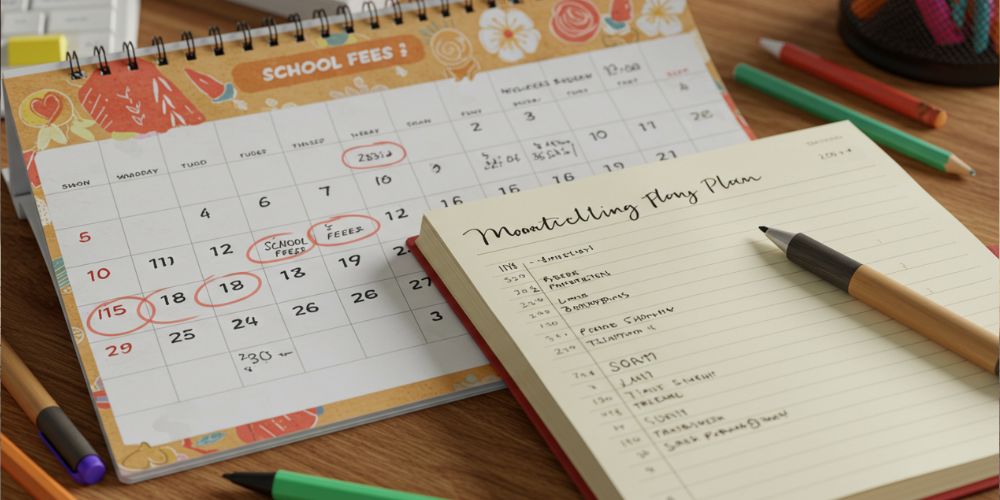
8 Best Financial Tips for Families in Canada: Save More, Stress Less
Posted on |
Raising a family comes with plenty of joy, but let’s be honest, it also comes with a lot of expenses. From childcare to groceries, school supplies to surprise bills, the cost of keeping a household running can feel never-ending. And with prices rising faster than incomes, it’s no surprise that many families are searching for smarter ways to stretch their money, without adding extra stress.
The good news? Financial peace of mind isn’t just for the people who are obsessed with their spreadsheets. With a few intentional habits, families can not only make their dollars go further, but they can also do more with less stress. This guide will give you 10 practical, easy-to-implement financial tips specifically tailored for your family. These strategies will help you save on everyday expenses, plan for the future, and still enjoy the moments that matter.
So, whether you’re looking to optimize your budget or adopt smarter habits, these financial tips for families will show you how to save more and reduce stress without putting a dent in your bank account.
1. Track Your Spending (You’d be surprised where it goes!)

The first step to better managing your family’s finances is knowing exactly where your money is going. Many families don’t realize how much they’re spending on small, everyday items until they start tracking it. Tracking your expenses helps highlight patterns, which helps identify the weak spots in your budgeting. So once you have a clear picture of where your money is going, you can make informed decisions on where to cut back and where to spend more for future savings.
A great way to start is by using a simple budgeting app or even a spreadsheet. One example is YNAB. Make it a habit to log every expense, big or small, for at least a month. You might be surprised at how much those little things add up.
Quick Tip: Consider setting up notifications on your bank app to alert you when large or unusual purchases are made. This way, you stay on top of things in real-time.
2. Build a Family Budget That Actually Works

Budgeting doesn’t have to be complicated, and it definitely shouldn’t feel like punishment. The goal isn’t to track every penny with a calculator in hand, but to give your money a plan so it’s working for you, not just disappearing. A good family budget helps you stay in control, avoid surprises, and feel more confident about where your money is going.
One of the most useful (and beginner-friendly) methods is the 50/30/20 rule:
- 50% for needs (housing, bills, groceries)
- 30% for wants (dining out, hobbies, fun)
- 20% for savings and debt repayment
Start by tracking your monthly income and expenses. Plus, you can always tweak the budget based on your family’s unique priorities.
3. Save Before You Spend (Pay Yourself First)

Saving money often gets pushed to the bottom of the list, like it’s something we do after everything else is paid for. But if you flip that thinking and treat savings like a non-negotiable expense, you can build financial security without feeling like you’re constantly playing catch-up.
But whats the easiest way to save? Automate it.
Set up an automatic transfer to your savings account right when your paycheque comes in, even if it’s a small amount.
Other smart ways to build savings:
- Use round-up tools that save your spare change.
- Redirect any unexpected income (like tax refunds or bonuses) straight into savings.
- Open separate savings pots for different goals (emergency fund, holiday fund, etc.).
It’s not about stashing away huge amounts overnight. It’s about making saving a habit that runs quietly in the background and is a saviour in times of emergency
4. Plan for Big Expenses (No surprises!)

Some expenses feel like they come out of nowhere, such as birthdays, holidays, school supplies, or family vacations. But in reality, most of these are completely predictable. The problem is we often forget to plan for them in advance, and when they hit, they throw everything off. That last-minute scramble can lead to stress or even debt, especially if you’re relying on credit to cover the gap.
The solution? Break big costs into smaller, manageable chunks and treat them like monthly bills. You will not just be saving, but giving your future self peace of mind.
Here’s how to stay ready:
- Break down the total cost of an event (Christmas, back-to-school, birthdays).
- Start saving a little bit each month toward that cost.
- Track your spending and adjust as you go.
When you’ve already budgeted for the big stuff, the fun moments don’t come with a side of financial anxiety.
5: Cut Out Unnecessary Subscriptions

As a big family It’s so easy to lose track of how many subscriptions you’ve signed up for from streaming services, fitness apps, kids’ games to music platforms… it all adds up fast. And because they renew automatically in the background, its very likely they are causing you to spend more than you might realize.
Do a quick monthly audit of all your monthly subscriptions and ask, Are we really using this? Cancel the ones that don’t add real value, and consider rotating services instead of keeping them all at once.
That said, not all subscriptions are budget busters; some can actually help you save, especially if they replace frequent impulse buys. A well-chosen subscription box can be a fun way to enjoy treats or essentials at a lower cost than buying individually. Whether it’s self-care, snacks, or specialty items, subscriptions can offer great value when they truly fit your lifestyle. Check out these Best Cookie Subscription Boxes in Canada.
6. Find Deals on Everyday Items (Including Groceries)

Feeding a family and keeping a household running isn’t cheap, but it also doesn’t have to feel like your paycheck disappears the minute you step into a grocery store or hit “order now.” The trick isn’t to stop spending altogether; it’s to shop smarter, especially for things you buy regularly. From food and toiletries to school supplies and cleaning products, there are dozens of ways to cut costs without cutting corners.
Here are a few practical ways to make the most of your everyday spending:
- Plan your shop around flyers or use apps to check local deals before heading out.
- Buy in bulk when it makes sense (and you know you’ll use it), or split the cost with friends or family to avoid waste.
- Don’t ignore store brands: Most of your local stores are just as good, and much cheaper than big-name labels.
- Use vouchers and promo codes for groceries, clothing, home items, and more. In this fast paced world, that is also just a search away.
Well, you don’t even have to do that, check out the vouchers listed below, they cover everything you will need for groceries in Canada.

15% OFF All Orders
Get 15% OFF All Orders At Musicians Friend Note: Exclusions Apply

25% OFF Selected Orders
Get 25% OFF Selected Orders At Dorothee Schumacher CA

10% OFF Coupon Code
Use coupon code to get 10% OFF at Lasso
7. Build an Emergency Fund (It’s a must for peace of mind)

Life doesn’t always give you a heads-up. A surprise car repair, a sudden trip to the dentist, or even a temporary loss of income can throw your whole budget off track. That’s where an emergency fund steps in; it’s almost like a financial bubble wrap for your family.
You don’t need thousands saved overnight. Start small: even setting aside $10 or $20 a week can add up faster than you think. The key is consistency. Treat it like a non-negotiable expense, and you’ll be thanking yourself later.
8. Use Tax Benefits and Government Programs

There’s no shame in getting help; in fact, that’s exactly what many Canadian government programs are there for. Whether you’re raising kids, planning for the future, or just trying to ease monthly expenses, tapping into the right benefits can make a real difference.
The Canada Child Benefit (CCB) is a big one, It is a tax-free monthly payment made to eligible families to help with the cost of raising children under 18 years of age. Here are a few more key programs and benefits to explore:
- Registered Education Savings Plan (RESP): Helps you save for your child’s education with government grants.
- Tax-Free Savings Account (TFSA): Grow your savings without paying tax on the gains.
- Registered Retirement Savings Plan (RRSP): Contribute pre-tax income and lower your taxable income.
Final Thoughts
Managing finances as a family in Canada can feel like a balancing act, but with the right strategies, it doesn’t have to be stressful. By implementing simple, intentional habits, like creating a budget, saving before spending, and planning for big expenses, you can take control of your financial situation and make room for the things that really matter.
From cutting unnecessary subscriptions to taking advantage of government benefits, every small change you make adds up over time. Whether you’re maximizing your grocery budget or using tax credits to reduce your financial burden, these tips can help you save more and stress less.
The best part? By being proactive and strategic, you’re not only securing your financial future, but you’re also creating more opportunities to enjoy life as a family. So take these tips to heart and start putting them into practice, because your best financial life is just a few intentional choices away.
Frequently Asked Questions
Q. Why should I track my spending?
It helps you see exactly where your money goes so you can cut waste and save more.
Q. Do I really need a budget?
A budget gives your money a plan and helps reduce financial stress.
Q. How do I start saving money if I live paycheck to paycheck?
Start small. Even $10–$20 a week adds up. Automate your savings to make it a habit.
Q. Are subscription services really costing me that much?
Many people pay for unused services without realizing it. Review and cancel what you don’t need.
Q. How can I save money on groceries?
Use flyers, buy in bulk when it makes sense, try promo codes and vouchers at Saving Says CA.
Q. What’s the 50/30/20 rule?
Spend 50% on needs, 30% on wants, and 20% on savings and debt repayment.
Q. Are there any government programs that can help families in Canada?
Yes—CCB, RESP, TFSA, and RRSP can help with child costs, education, and savings.



